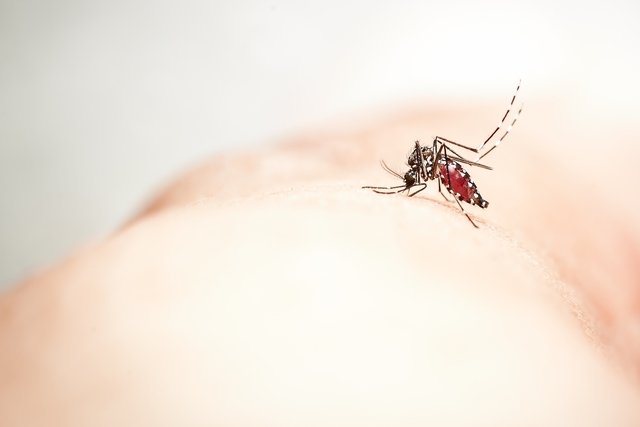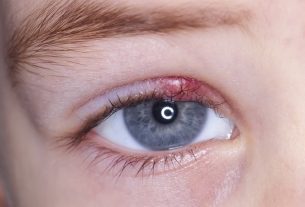Zika is an infection caused by the ZIKV virus transmitted by mosquito bites Temples of the Egyptianscausing symptoms such as low fever, headache, red spots on the body and joint pain, and symptoms may appear within 10 days after infection.
This arbovirus has symptoms similar to dengue and Chikungunya, however, in some cases it may present no symptoms, or have mild symptoms, the most characteristic of this infection being skin rash and conjunctivitis.
Read too: Dengue, Zika or Chikungunya: what’s the difference?
If Zika is suspected, it is recommended to consult an infectious disease specialist or general practitioner to begin the most appropriate treatment, which is generally done with rest, increased fluid intake and medication to alleviate symptoms, as there is no specific treatment to eliminate the virus from the body.

Zika symptoms
The main symptoms of Zika are:
- Low fever, below 38ºC, which may be absent;
- Conjunctivitis;
- Red spots on the skin;
- Intense itching at the location of the spots on the skin;
- Headache;
- Joint pain or swelling;
- Muscle pain and excessive tiredness.
The first symptoms of Zika appear approximately 2 to 14 days after the mosquito bite and can last from 2 to 7 days, and can be confused with symptoms of flu, COVID-19, dengue fever or rubella.
Therefore, it is important to go to the emergency room when more than 2 of these symptoms appear, so that a medical evaluation can be carried out, in order to identify the cause and start the most appropriate treatment. Learn about other symptoms caused by the Zika virus.
Zika Symptoms in Babies
In the case of babies, it can be a little more complicated to identify the symptoms of Zika. Therefore, it is very important for parents to pay attention to signs such as:
- A lot of crying;
- Restlessness;
- Appearance of red spots on the skin;
- Fever above 37.5ºC;
- Red eyes.
Furthermore, some women can become infected with the Zika virus during pregnancy, which can interfere with neurological development and result in the baby being born with microcephaly, in which the baby’s head and brain are smaller than normal for their age. . Learn how to recognize microcephaly.
If Zika is suspected, the child should be taken to the pediatrician so that diagnostic tests can be carried out and the most appropriate treatment can be started.
How to confirm the diagnosis
The diagnosis of Zika is made by an infectious disease specialist, general practitioner or pediatrician through evaluation of symptoms, travel history to places with Zika or living in regions with an outbreak of the infection, in addition to physical and laboratory examination.
Make an appointment with the infectious disease specialist in the region closest to you:
Taking care of your health has never been easier!
Therefore, the doctor may request a blood count, in which a mild decrease in leukocytes, called leukopenia, can be observed, in addition to a decrease in platelets, and a liver enzyme test, which generally shows an increase in transaminases.
To confirm the diagnosis, the doctor must request an RT-PCR test to identify the ZIKV virus in the body or a viral serology test to identify antibodies against the virus.
Furthermore, in the case of pregnant women, the doctor must request a fetal ultrasound.
How transmission happens
The Zika virus, called ZIKV, is transmitted through mosquito bites Temples of the Egyptians infected by the virus, which is the same mosquito that transmits dengue and Chikungunya, and usually bites in the late afternoon. Learn how to identify mosquitoes Temples of the Egyptians.
However, the virus can also pass from mother to child during pregnancy, which can cause serious consequences in the baby, called microcephaly.
Furthermore, there is also the possibility that the virus can be transmitted through unprotected sexual intercourse with people who are infected.
Read too: Zika virus in pregnancy: symptoms, treatment and risks for the baby
How the treatment is carried out
Zika treatment must be carried out with the guidance of an infectious disease specialist, general practitioner or pediatrician and consists of supportive measures to alleviate symptoms, as there is no specific treatment or medicine to eliminate the Zika virus from the body.
Therefore, the treatments that may be recommended by the doctor are:
- Restavoiding excessive efforts;
- Increased fluid intaketo avoid dehydration;
- Analgesics, such as paracetamol or dipyrone, to combat pain and fever;
- Antiallergicssuch as loratadine, cetirizine or hydroxyzine, to relieve redness in the skin, eyes and itching on the body;
- lubricating eye drops, to relieve symptoms of conjunctivitis, such as red eyes.
Anti-inflammatory medications, such as ibuprofen, acetylsalicylic acid or diclofenac, for example, should not be used, as in cases of dengue fever, because they can increase the risk of bleeding or Reye’s syndrome. Check out a list of contraindicated medications for these two diseases.
See the following video on how to eat to recover from Zika more quickly:
Possible complications
The main complications of Zika are:
1. Microcephaly
Microcephaly is a complication that can occur in babies during pregnancy of mothers infected with the virus that causes Zika.
It is believed that microcephaly may occur due to a change in the pregnant woman’s immune system that causes the virus to cross the placenta and reach the baby, causing brain malformation.
Normally, microcephaly is more serious when a woman is infected in the first trimester of pregnancy, but having Zika at any stage of pregnancy can lead to this malformation in the baby, and it is very important to avoid infection and follow all the obstetrician’s recommendations. See more about microcephaly.
Furthermore, Zika during pregnancy can also cause complications such as premature birth, fetal loss or stillbirth.
2. Congenital Zika syndrome
Congenital Zika syndrome is a set of malformations in the baby during pregnancy caused by the ZIKV virus that can be transmitted from the pregnant woman to the developing baby.
This syndrome is characterized by severe microcephaly, muscle contractures of the lower limbs, increased muscle tone, damage to the back of the eyes or hearing loss, for example.
3. Guillain Barré syndrome
Guillain Barré syndrome is a complication of Zika that can occur because, after infection with the virus, the immune system makes a mistake and begins to attack the healthy cells of the nervous system, which no longer have the myelin sheath, which is the main characteristic of this syndrome.
Thus, months after the symptoms of the Zika virus subside and are controlled, some people may experience this syndrome, which begins by causing a tingling sensation in some areas of the body and weakness in the arms and legs. Know how to identify the symptoms of Guillain-barré syndrome.
In case of suspicion, you should see a doctor quickly to prevent the progression of the syndrome, which can even cause paralysis of the body’s muscles and breathing, being potentially fatal.
4. Lupus
Although it apparently does not cause lupus, one death has already been recorded in a patient diagnosed with lupus after infection with the Zika virus.
Therefore, although it is not known exactly what the connection is between this disease and lupus, what is known is that lupus is an autoimmune disease, where defense cells attack the body itself, and there is a suspicion that the Zika infection can further weaken the body, potentially being fatal.
Therefore, all people who are diagnosed with Lupus, or any other disease that affects the immune system, must take extra care to protect themselves and not catch Zika.
How to prevent
Zika prevention can be done through measures to avoid mosquito bites, such as the use of repellents, window screens and mosquito nets over beds.
Read too: Repellents: types, which one to choose and how to use
Furthermore, it is important to adopt other measures to control the proliferation of transmitting mosquitoes, such as eliminating stagnant water reservoirs at home and the use of insecticides. See more measures to prevent diseases like Zika.
Another important measure is to use a condom in all sexual relations for at least 3 months after the onset of symptoms, as the Zika virus may be present in semen or vaginal secretions for an indefinite period of time. However, one study demonstrated the presence of the virus in semen for up to two and a half years.

Sign up for our newsletter and stay up to date with exclusive news
that can transform your routine!
Warning: Undefined array key "title" in /home/storelat/public_html/wp-content/plugins/link-whisper-premium/templates/frontend/related-posts.php on line 12
Warning: Undefined array key "title_tag" in /home/storelat/public_html/wp-content/plugins/link-whisper-premium/templates/frontend/related-posts.php on line 13



